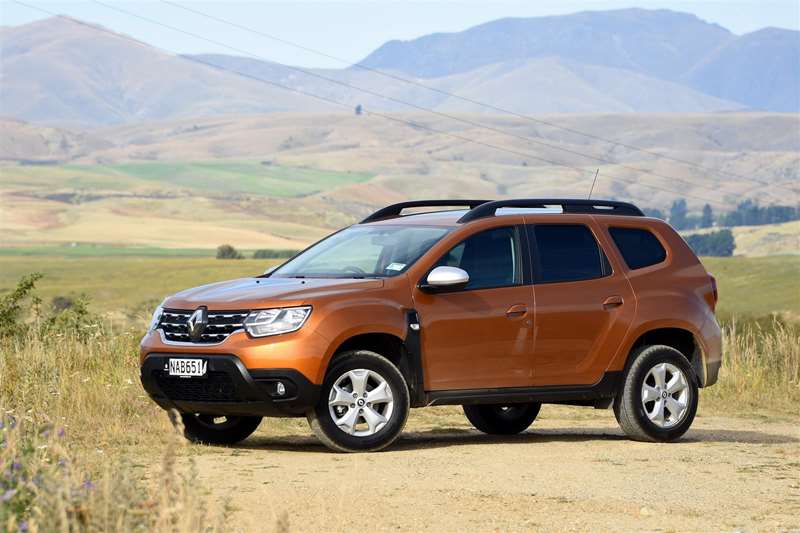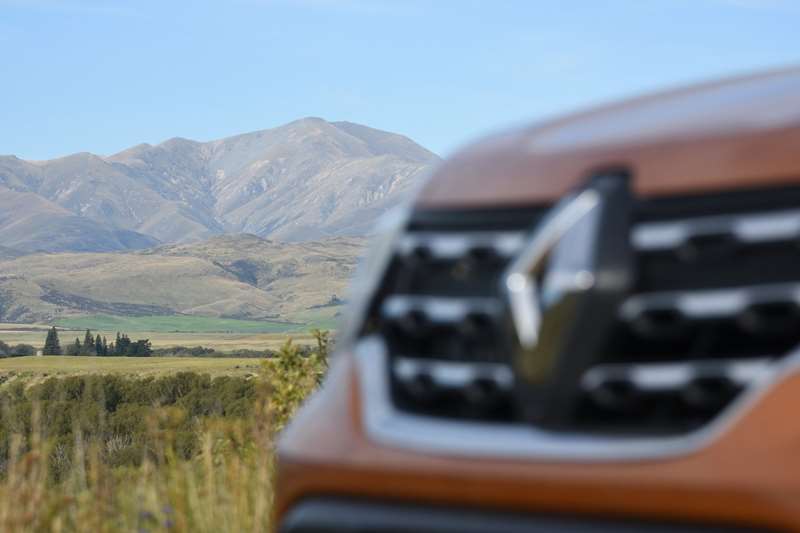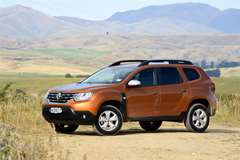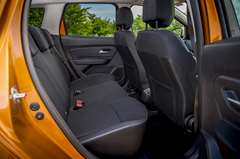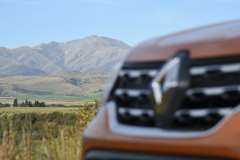There’s a new entry-level crossover model in Renault’s New Zealand range. David Thomson tries it for size.
What’s new?
Lauded in Europe for the cheap, cheerful but reliable motoring it provides, the Dacia Duster already has a reasonable profile here thanks to the unlikely enthusiasm that James May and his mates from the iconic Top Gear TV show have shown for this quirky Eastern European crossover in recent years.
Now into its second generation, the Duster has landed here courtesy of Dacia’s parent company Renault, but with a twist. That twist is a little bit of badge-engineering in which the brand name Dacia, and its associated adornments, are replaced by the name Renault, and its diamondshaped emblem.
Presumably, it’s a change made to avoid the need for Renault — hardly a major brand in New Zealand — to muddy its promotional waters by having to add the brand name Dacia to its Kiwi portfolio. Instead, the Duster slots into the main Renault line-up as a junior crossover partner to the company’s slightly larger, more lavishly trimmed, and more expensive Koleos.
The original Duster launched in 2010, but left-hand drive European markets saw an all-new replacement from late-2017, with the first right-hand drive versions available in the United Kingdom last year.
In Europe, this latest Duster is offered with a choice of petrol and diesel engines, and front-wheel drive or four-wheel drive. Here things are kept simpler —there’s one model available, the front-wheel drive 1.6-litre petrol.
The Duster is similar in size to the Kia Seltos, this country’s best-selling compact crossover, and carries a $27,990 price tag that matches that of the entry-level Seltos.
What’s it like to look at?
There’s 205mm of ground clearance despite the model here being a front-wheel drive machine with no serious off-road pretentions. That ground clearance, along with black plastic front and rear bumper inserts, scuff plates and wheel guards, gives it a rugged look. There are neatly integrated roof rails, and curious black trim strakes run up the rear edge of the front wheel arches.
Five-spoke alloy wheels with 215/65 R16 tyres are fitted, and front fog lights augment the halogen main beams. LED running lights are standard.
What’s it like inside?
Starting at the back, there’s a deep and practically proportioned boot. It’s at the upper-end of its class for carrying capacity, able to carry 445-litres of cargo in normal use and 1623 litres when the rear seats are flat.
The back seat is set up to accommodate three occupants, but it’s better suited to two: headroom is fine, but rear leg and shoulder room is tight, and the seating position is quite knees-up. The very flat rear seat squabs are sign of the Duster being built to a tight budget, as is the absence of such features as a fold-down centre armrest, separate rear ventilation orrear USB plug-in points.
Those in the front seats fare much better for space, comfort and visibility.
Featuring contrasting fabrics, the front seats are firm (which I count as a plus) and supportive. The driver’s seat includes a fold-down armrest and is height adjustable (combining with rake-andreach adjustment for the steering wheel). The driver’s footwell is cramped on the left, and along with the associated lack of a driver’s footrest and some quirky button placements, is a drawback of the driving position.
Storage options up front comprise a decent glovebox with a tray above it, another tray forward of the gear lever, cupholders and oddment compartments between the front seats. There are adequate door bins.
The Duster is trimmed conservatively, with light colours above the waistline and dark below
Contrast highlighting is limited to low-key burnished metal door handles and surrounds for the air vents, major switches, and similar on and around the gear lever and on the steering wheel.
Featuring a layered design with prominent adjustable circular air vents, the dashboard — like the centre console and door trims — is entirely finished in hard-touch plastics.
A colour central touchscreen is neatly integrated into the console above the ventilation controls. The Duster’s sole USB plug-in point (a charge as well as interface plug, by the way) sits above the screen, alongside an AUX plug. The main instrument binnacle features a multi-function LCD screen between the analogue tachometer and speedometer dials.
The multi-function steering wheel provides cruise control buttons on the left, although the main button to activate either the cruise control or speed limiter is, oddly, located by the handbrake. The right-hand steering wheel buttons activate the different LCD screen options, while the driver controls for the audio and ICT system are tucked away on a separate stalk behind the steering wheel.
What comes as standard?
The Duster ticks the key boxes in the ICT space, with a decent six-speaker sound system, Apple CarPlay and Android Auto functionality, easy Bluetooth connectivity and satellite navigation. The trip computer and economymonitoring screens provide all that one might expect, and the fact that the graphics displays are straightforward is entirely in keeping with the Duster’s place in the market.
Single-zone manual airconditioning is fitted, there are power mirrorsand all-round power windows, along with a multi-view camera and rear parking sensors. There’s also push-button remote central locking.
Safety-wise, the Duster features a reasonablearray of passive features, but runs light with its active safety range. This explains, at least in part, the disappointing three-star safety rating under Europe’s NCAP test.
Passive safety features include front and side airbags, ISOFIX child seat anchor points, blind spot monitoring, tyre pressure monitoring and a seat belt warning system.
Full electronic stability and traction control systems are also fitted, but several contemporary features (fullradar cruise, lane-keeping assist, rear cross traffic alert and autonomous emergency braking) are absent.
With the engine’s modest peak outputs only reached high in the rev range, power delivery via a continuously variable transmission, light steering and a suspension setup focused on comfort, the Duster is hardly a thrilla-minute machine to drive.
Round-town motoring is fussfree and it has reasonable responsiveness except on steep hills. Counting as pluses are the lightness of the vehicle’s controls and soft suspension settings.
Open-road cruising on flat or gently undulating terrain is also fairly relaxed albeit with coarse-chip road noise. Ride quality stands out as a strong point, and the engine and transmission are smooth and quite refined as long as they are not asked to work too hard.
Once steeper hills or slower traffic are encountered, the Duster sheds its relaxed demeanour, as the engine and transmission work hard to maintainmomentum and overtake in a timely and safe manner.
Handling is entirely predictable and vice-free and its suspension impresses by sponging away even quite severe surface imperfections.
Economy is reasonable, with a 6.9litres/100km standard cycle figure, and 7.4litres/ 100km on test. The Duster’s satellite navigation system also recognises and warns of known speed camera spots and other hazards such as level crossings, as well as sounding warning chimes when speed limits change.
Verdict
There’s a fundamental and likeable honesty to the Duster, which makes it a more appealing car than initial impressions might suggest. But it drops the ball in terms of safety.
